At some point during this period, the USA is struck by the most devastating earthquake in its history
The Cascadia Subduction Zone is a 600 mile-long converging plate boundary stretching from northern California to southern British Columbia. The fault causes a major earthquake about once every 300 years. Compared to other fault lines, this is an unusually long return time – resulting in greater stress build-up and stronger subsequent earthquakes. The last major event (a so-called megathrust quake) took place in 1700 and was estimated to have had a magnitude of at least 9.0.
Since then, the movement of the two plates has steadily built up pressure. In the first half of the 21st century, the fault exceeds the vast majority of previous time intervals in recorded history.* During this time, the plates finally slip, resulting in the single most devastating earthquake in United States history.*** It is centred on the state of Oregon, with a duration of several minutes, inflicting deadly damage to major population centres like Portland, Seattle, Olympia and even Vancouver and Victoria. Of course, many structures have been retrofitted and are able to withstand the earthquake, along with the majority of newer buildings. However, years of economic trouble, as well as a general inexperience of large earthquakes, have left many structures vulnerable.
Bridges and highways collapse, while the ground in the Seattle bay area liquefies, dragging buildings underwater. Broken gas mains and power lines spark many fires. The quake generates massive tsunamis,* which inundate coastal communities from California to Alaska. These giant waves are sent racing across the Pacific, causing damage as far away as Hawaii and Japan. Millions are left without power, while emergency responders struggle to adapt to the scale of the disaster. The death toll quickly reaches into the thousands, while the financial cost exceeds $100 billion. Along with the similarly devastating southern California earthquake, this disaster pushes much of the American west coast toward financial ruin.
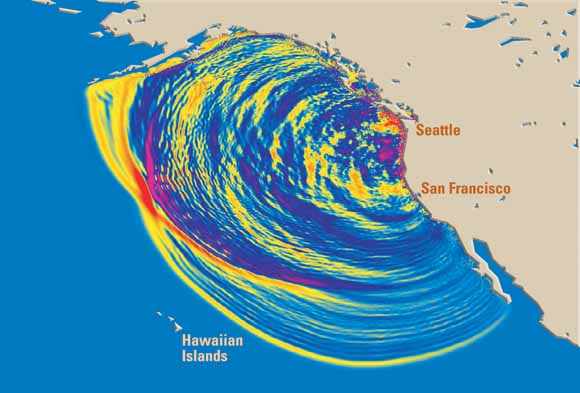
At some point during this period, a major earthquake hits California
Experts had been warning for years that it wasn’t a matter of “if” – but “when” a major earthquake would strike the Los Angeles basin.* This particular quake is of sufficient magnitude to cause tens of billions of dollars’ worth of economic damage, with much loss of human life. Thousands of buildings are destroyed and there is widespread damage to roads, bridges and other infrastructure.

China builds the longest undersea tunnel in the world
China’s latest megaproject is a 76 mile (122 km) undersea tunnel running from Dalian to Yantai. It surpasses the combined length of the world’s two longest undersea tunnels – Japan’s Seikan Tunnel and the Channel Tunnel between Britain and France. With previous journeys cut by 800 miles, it forms a vital high-speed rail link between the north and south of the country, boosting economic growth significantly.
This $36 billion project is constructed in less than five years.* It is actually three parallel tunnels – one for cars, one for trains and one for maintenance, placed 100 ft below the sea bed. Vertical shafts are located on island stepping stones to provide ventilation. However, there is much controversy surrounding the route, which passes over two major earthquake fault lines.*
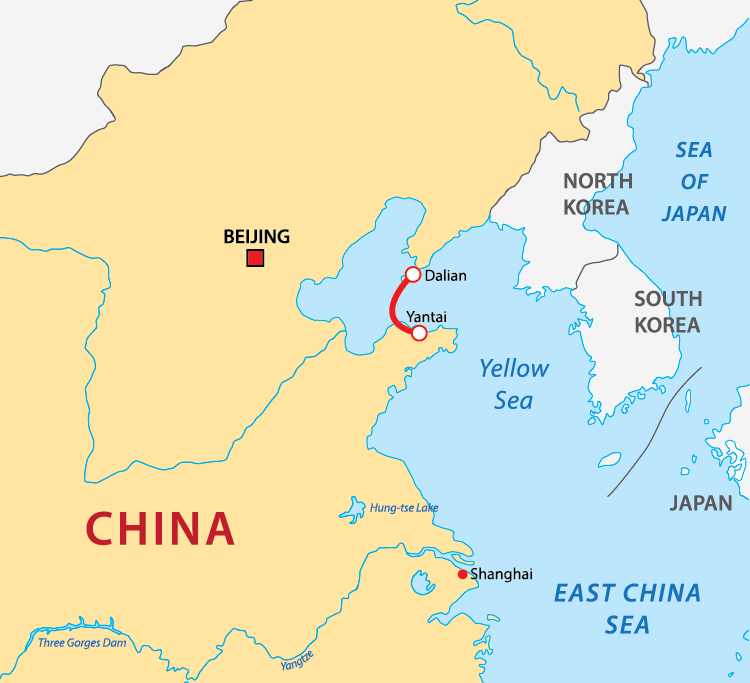
۲۰۱۶
Completion of the Panama Canal expansion project
Built from 1881 until 1914, the Panama Canal was among the largest and most difficult engineering projects ever undertaken. Functioning as a short cut between the Atlantic and Pacific Oceans, it greatly reduced the travel times for ships – enabling them to avoid the lengthy, hazardous Cape Horn route around the southernmost tip of South America.
For nearly a hundred years, the canal enjoyed great success, acting as a key conduit for international maritime trade. By the early 21st century, however, it was handling far more vessel traffic than had ever been envisioned by its builders. In 1934, it was estimated that the maximum capacity of the canal would be around 80 million tons per year. In 2010, the actual figure was nearly 300 million tons and growing rapidly, with over a third of shipping traffic unable to pass through because of size. Global demand necessitated a major upgrade.
Plans were formulated for various improvements – including the excavation of new traffic lanes allowing more and larger ships to transit; two new locks, one each on the Atlantic and Pacific sides; the widening and deepening of existing channels; and the raising of Gatun Lake’s maximum operating level. Construction was originally slated to take seven or eight years, with new locks beginning operations in late 2014, almost exactly a century after the canal first opened. In 2012, however, it was announced that the expansion project had fallen six months behind schedule, pushing the opening date back to April 2015. Further delays were reported in September 2014.
In early 2016, construction is finally completed and the new gates are open for transit.* Capacity has now been doubled, allowing the canal as a whole to handle the projected rise in volume to 2025 and beyond. This mega-project eases numerous burdens on the shipping industry, as well as creating huge numbers of jobs among the Panamanian people – generating enough wealth to reduce poverty in the country by almost 30%. However, critics of the project contend that there are serious environmental issues.
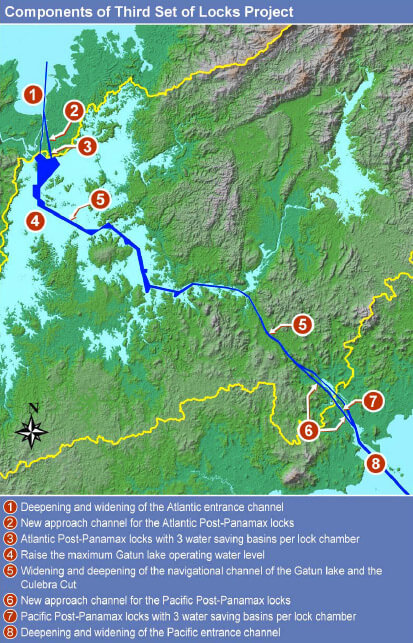
Map of the Panama Canal expansion project in 2016. Credit: PanCanal.com
Microchipping of all dogs in England
In April 2016, a new law comes into effect requiring all dogs in England to be tagged with a microchip implant.* This measure has been introduced in order to cut the growing number of strays. As of 2012, there were 118,932 dogs reported lost or stolen, of which 55,898 (about 47%) were reunited with their owner. Around 6,900 (5%) were put to sleep. This cost £۵۷m (US$89m) to the taxpayer and welfare charities each year. Only 7,098 dogs were microchipped in 2012, barely 0.1% of the 6.7 million dogs in England.
These implants are similar in size to a grain of rice. They are coated in a bio-compatible glass, the same material used in human pacemakers, ensuring they are not rejected. The devices are held firmly in place by fusing to the dog’s bodily tissue. A simple procedure can be performed without anaesthetic, using a sterile needle to insert the chip between the shoulder blades.
Similar measures had already been introduced in New Zealand and Northern Ireland. Other countries begin to recognise the benefits of microchipping in the years ahead. By the 2040s, this is being extended into humans.*

X-ray view of a microchip implant. Credit: Joelmills/Hundehalter
Euro 2016 is held in France
The 2016 European Football Championship is hosted by France between 10th June–۱۰th July 2016. This year, the tournament is expanded in size from 16 to 24 teams, following a plan unanimously agreed by senior officials of all 53 UEFA member nations. The format of the final tournament consists of six groups of four teams, followed by a round of 16, quarter-finals, semi-finals and final. The top two from each group will qualify in addition to the four best third-ranked sides, the same system as was applied in the World Cups from 1986 to 1994. This format generates a total of 51 games, compared with 31 prior to 2016, played over a period of 29 days.

Rio de Janeiro hosts the Olympic Games
Rio becomes the first South American city to host the event, which opens on 5th August 2016 and finishes on 21st August 2016.

The first manned flight of SpaceX’s Dragon V2
The Dragon is a spacecraft developed by SpaceX, the American private space company founded by billionaire entrepreneur Elon Musk. It is launched into space by the Falcon 9 two-stage-to-orbit launch vehicle, and is capable of both manned and robotic operation. The maiden flight occurred in 2010, during which it became the first commercially-built and operated craft to be recovered successfully from orbit. The Dragon docked with the International Space Station (ISS) in 2012, again becoming the first commercial spacecraft to do so. Later that year, under NASA’s Commercial Resupply Services program, it began regular cargo deliveries to the ISS. Alongside rival firm Orbital Sciences Corporation, this contract would include a minimum of 12 missions until 2016, with potential for a second phase lasting into the 2020s.
In 2014, a manned version of the spacecraft – known as Dragon V2 – was unveiled. Capable of transporting up to seven astronauts, this featured a considerably more advanced design than its cargo-carrying predecessor. The V2 now included:
- Fully reusable capabilities; able to fly multiple times, significantly reducing the cost of access to space
- Propulsive-landing “almost anywhere in the world” with the accuracy of a helicopter (plus a backup parachute system for emergencies)
- Eight side-mounted SuperDraco engines, clustered in redundant pairs in four engine pods, with each engine capable of producing 71 kilonewtons (16,000 lbf) of thrust
- The first fully 3-D printed engine, the SuperDraco. Engine combustion chamber of printed Inconel, an alloy of nickel and iron, using a process of direct metal laser sintering. Engines contained in a protective nacelle to prevent fault propagation in the event of an engine failure.
- Composite-carbon-overwrap titanium spherical tanks for holding the helium used for engine pressurisation, SuperDraco fuel and oxidiser
- Updated third-generation PICA-X heat shield
- A futuristic interior with luxury seats and tablet-like computer, swivelling down for optional crew control by the pilot and co-pilot
Dragon V2 would make its first unmanned test flight in 2015, with a manned flight in 2016.*
India’s first manned space flight
India becomes only the fourth nation – after Russia, the US and China – to independently launch humans into space. The rocket used is a variant of the Geosynchronous Satellite Launch Vehicle Mark 2, operated by the Indian Space Research Organisation (ISRO). This carries a largely autonomous 3-ton capsule, with a two-person crew on board. They remain in orbit around the Earth at 248 miles (400 km) altitude for seven days, before splashing down in the Bay of Bengal. The total cost of the project is about 124 billion rupees ($2.67 billion USD).*

Credit: GW_Simulations
India launches its second unmanned lunar probe
In addition to sending its first man into space, India conducts its second unmanned lunar exploration this year.* Chandrayaan-2 is a probe which includes an orbiter as well as two rovers: one lander/rover built by Russia, and a second smaller rover built by India. The wheeled rovers move around the surface, picking up soil and rock samples for on-site chemical analysis. The data is relayed back to Earth via the Chandrayaan-2 orbiter. The team is headed by Dr. Mylswamy Annadurai, who was behind the success of the previous mission (Chandrayaan-1).
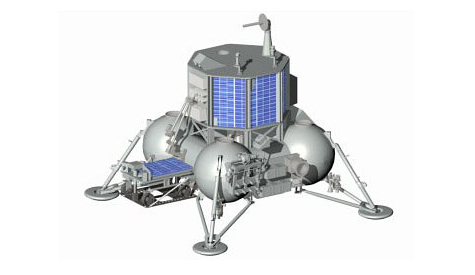
The International Lunar Observatory begins operations
The International Lunar Observatory (ILO) is a collaboration between two companies – Moon Express and the International Lunar Observatory Association. The project is both scientific and commercial. It places a telescope on Malapert Mountain, a 5 km (3.1 mi) crater rim at the Moon’s southern pole. Its 2 m (6.6 ft) dish antenna can observe space without interference from Earth’s atmosphere and is the first private instrument to conduct astrophysical studies and communications from the lunar surface.
The ILO features an internet-based access and control system, made available to researchers, educators and the general public. This is designed to promote a new model of “citizen science”, public participation and international collaboration. In addition to capturing images of the Milky Way galaxy and deep space, it also takes photos of the lunar horizon and Earth.
A small rover is also deployed. This prospects for resources including metals, minerals and water, in the hope of locating deposits that could be extracted in the future. The ILO is preceded by a proof-of-concept mission known as the ILO-X, launched in 2015. This shoebox-sized device is followed by the much larger telescope and exploratory rover in 2016.*
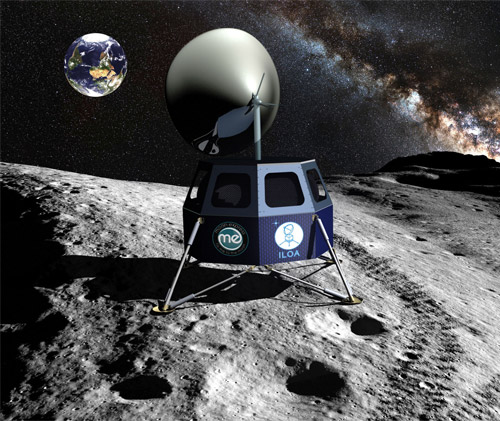
The first hotel in space
This year sees Russian space group, Energiya, launching the world’s first space hotel in partnership with US firm Orbital Technologies.** Capable of housing up to seven people, it offers spectacular views of the Earth and includes a menu crafted by celebrity chefs. It also functions as a possible emergency refuge for astronauts from the International Space Station.
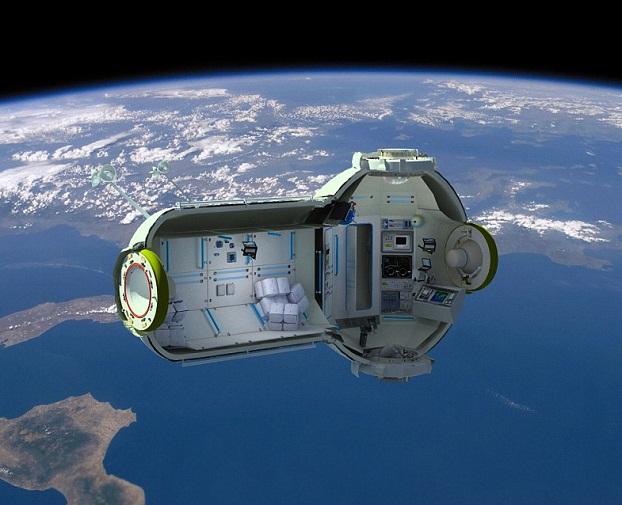
Balloon trips up to 20 miles high
World View Enterprises – a new startup company based in Arizona – begins offering suborbital flights in 2016,* using a capsule lifted by balloon up to 20 miles (32 km). Although some way short of the 62 miles (100 km) defined as “outer space”, passengers are nevertheless treated to spectacular views of the Earth far below. Customers pay $75,000 each for a trip lasting four hours, with up to eight occupants able to walk freely inside. Safety mechanisms allow the balloon to glide safely back in the event of a malfunction.
InSight touches down on Mars
InSight is a probe launched by NASA to Mars, arriving in September 2016. The name stands for Interior Exploration using Seismic Investigations, Geodesy and Heat Transport. A stationary lander is placed on the surface of Mars, equipped with a seismometer and heat flow probe that drills 5 metres (16 ft) below ground – deeper than all previous arms, scoops, drills and probes. InSight’s primary objective is to conduct an advanced study into the early geological processes that shaped Mars. The rocky inner planets share a common ancestry that began with a process called accretion. As each body increased in size, its interior heated up and evolved to become a terrestrial planet with a core, mantle and crust. Despite this common ancestry, each of the terrestrial planets was later shaped and molded through a poorly understood process called differentiation. InSight’s goal is to improve understanding of this process. It will confirm whether Mars’ core is solid or liquid, and determine why the crust is not divided into tectonic plates that drift like Earth’s.*
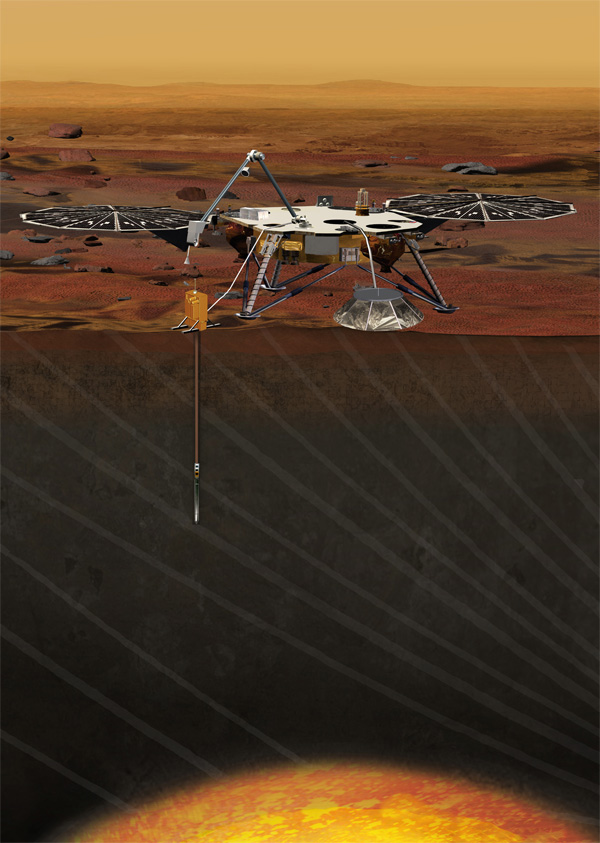
The Juno probe arrives at Jupiter
Launched in 2011, Juno becomes the second probe to orbit the gas giant, the first being Galileo in 1995. It is equipped with a camera, infrared and microwave radiometers, particle detectors, and an ultraviolet spectrometer. The mission objectives are:
- Determine precisely how much water is in Jupiter’s atmosphere, to help confirm which planet formation theory is correct (or if new theories are needed).
- Look deep into Jupiter’s atmosphere to gain a better understanding of its composition, cloud motions, temperature and other properties.
- Map Jupiter’s magnetic and gravity fields – revealing its deep structure, core mass and overall dynamics, helping to further explain the planet’s origin.
- Explore and study Jupiter’s magnetosphere near the poles, especially the auroras – Jupiter’s northern and southern lights – providing new insights into how the planet’s enormous magnetic field affects its atmosphere.
Juno arrives at the planet in July 2016 and its mission concludes in October 2017, after a total of 33 orbits.* Like its predecessor, Galileo, it is crashed into the outer atmosphere of the gas giant, where it compresses and then melts as it falls.
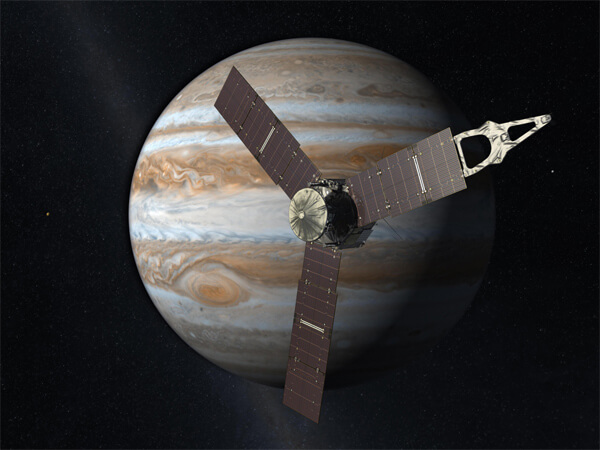
Credit: NASA/JPL
The world’s largest single-aperture telescope is completed in China
The Five-hundred-metre Aperture Spherical radio Telescope (FAST) is a major new astronomical observatory built in Guizhou province, southwest China. Constructed between March 2011 and September 2016,* it becomes the largest single-aperture telescope in the world, half a kilometre wide and featuring a collecting area of 2.1 million sq ft (196,000 sq m). This dwarfs the next largest – the Arecibo Observatory in Puerto Rico – which had held the title since 1963.* The dish itself sits within a natural depression and is unable to move, due to its enormous size. However, the surface shape is changeable and the feed cabin (where radio waves are focused) can be moved around. This provides a viewing angle of up to 40° from the vertical.
FAST is able to gaze three times further into space and survey the skies ten times faster than Arecibo. Its primary roles include mapping the neutral hydrogen within the Milky Way at very high resolution, tripling the number of known pulsars from 2,000 to 6,000, and listening for possible signals from alien civilisations at distances of up to 1,000 light years; far more stars can be monitored than in previous surveys. FAST is the latest in a whole series of massive new telescopes being built around the world in the early 21st century, heralding a new era of astronomy.
Click to enlarge
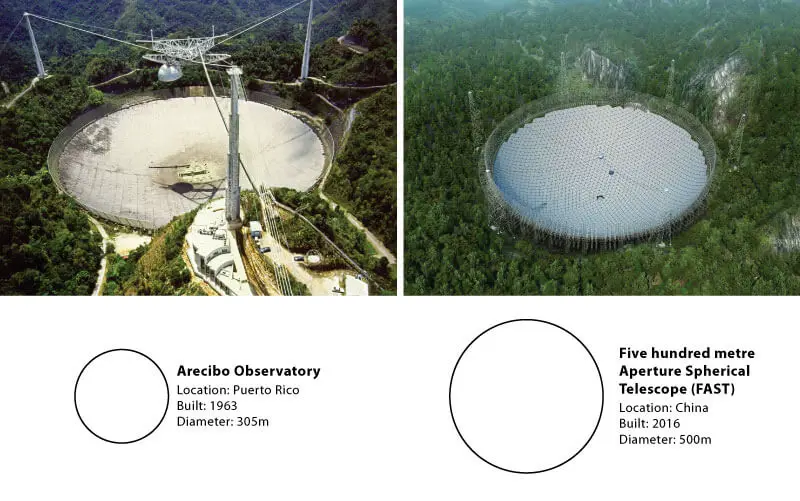
Credit: NASA / National Development and Reform Commission (NDRC) and the Chinese Academy of Sciences (CAS)
The mining industry is highly automated
Recent years have seen a rapid increase in the use of automation, a trend that is becoming especially prevalent in the mining sector. Rio Tinto, for example, now has a fleet of self-driving haul trucks which together are responsible for over half of its total material moved.** Codelco, meanwhile, has installed automated IT systems which now cover both its open pit mines along with all underground operations.* Wireless, intelligent devices are able to communicate with each other to monitor environmental conditions and to automate control of the mines’ technological systems and equipment.
Self-driving vehicles, robotic drills, remote ship loading and other systems – despite their greater efficiency and improved safety – are now having a major impact on employment and economic activity. This is particularly true of Indigenous Australians in remote communities, for whom the mining industry has been their biggest employer. Some companies have promoted Aboriginal training, scholarships and business development, to provide the skills needed for new hi-tech jobs created by automation. However, the bulk of entry-level jobs are disappearing.*
As the use of robots and tele-operated machinery continues to increase, mining has begun to expand into new environments and locations that were previously off-limits to humans. This includes the seafloor, rich in metals like gold, copper, manganese, nickel and cobalt.** Longer term plans are being made to exploit asteroids.*
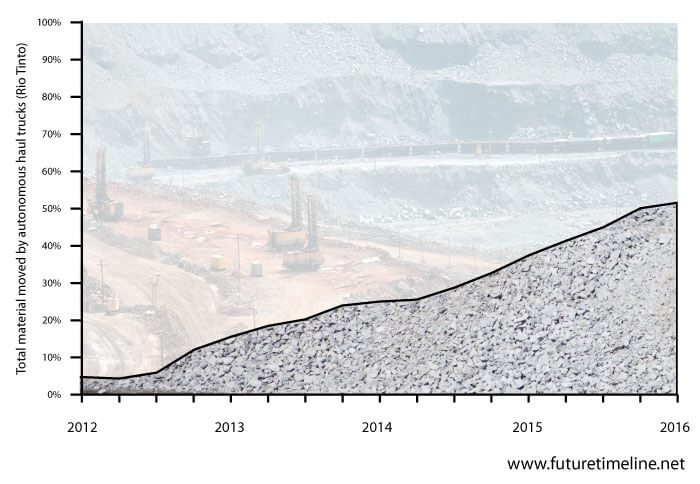
Agricultural robots are appearing on farms
Significant numbers of robots are now appearing on farms.* These have been in development for 20 years and are now cheap and sophisticated enough for mainstream use. New scanning and imaging technology has solved the problem of allowing robots to handle the varying shapes of individual fruits and vegetables. Their on-board computers can now differentiate between an object and its shadow and between green fruits, leaves and vines. This is accomplished using an array of cameras, each picking up a different spectrum of light and creating a perfect picture of the obstacles and topography in the robot’s surrounding environment.*
Complex algorithms allow robotic workers to “learn” the longer they are on the job, so they become more adept as time goes on. This helps the computer to recognise a fruit that is partially covered by a leaf or similar obstruction, for example. The grasping tools themselves are based on human movements and are programmed to apply the correct pressure.
Advantages of this technology include much greater accuracy in spraying pesticides (cutting its use by 80%), uninterrupted output, and, as the technology improves, greater efficiency and speed. Initially, these robots are present on a small number of farms, often working alongside traditional human workers. As the years go by, however, and the technology proliferates, more and more farms begin to adopt robotic workers. By the 2020s, entire farms are becoming fully automated.*
The increased output helps to alleviate food shortages caused by rising global populations. Despite these gains, agricultural robots prove controversial. They exacerbate the ongoing unemployment crisis, with the potential of putting many thousands of workers out of a job. Mechanisation continues its unending progress, as yet another industry begins to be handed over to machines.
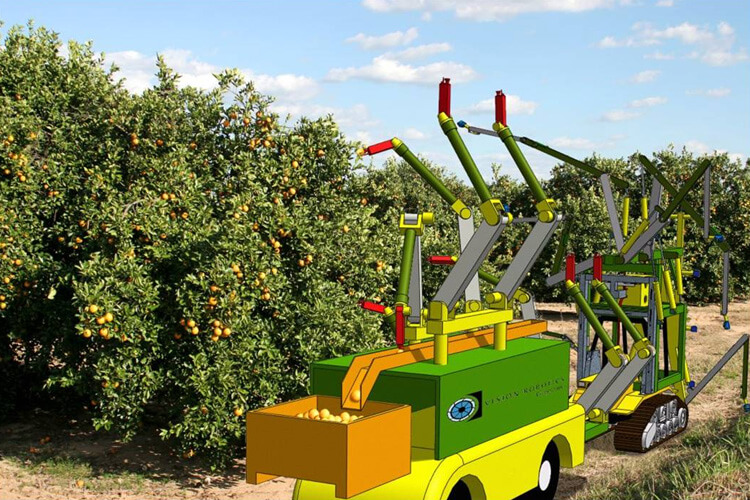
Credit: Vision Robotics Corporation
High-definition CCTV cameras are ubiquitous
Closed-circuit television (CCTV) has improved hugely in recent years with a shift from analogue to digital equipment. The vast majority of cameras now record footage in high definition, with some capable of gigapixel resolution. Although discouraging crime and helping to identify more offenders (made easier with facial recognition software), this mass proliferation of security is raising a number of privacy and civil liberties issues, due to a creeping sense of “Big Brother”. For instance, governments are using them to keep tabs on people to stifle protest, free expression and assembly.* This is especially notable in the UK – a country renowned for its surveillance culture – with more CCTV cameras per capita than anywhere else on the planet, and where the average person is filmed over 300 times each day. In 2012, there were 1.85 million CCTV cameras in the UK, 129,000 of which were high definition. By 2016, there are 3.7 million HD cameras, a 29-fold increase.*
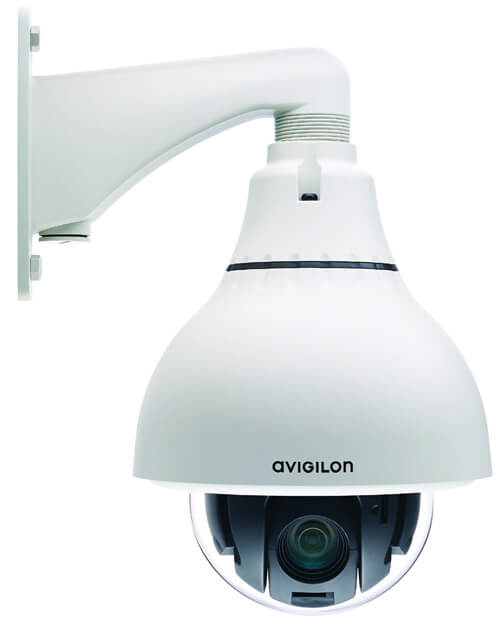
OLED displays are in widespread use
Having fallen greatly in cost, organic light-emitting diodes (OLED) are now available in a wide range of devices. These use less power than traditional LCDs whilst allowing sharper, thinner, brighter displays. They also eliminate the need for back lights. Sunlight that would normally “wash out” a display has no effect – the screens appear the same even in broad daylight, or when tilted at an angle.**
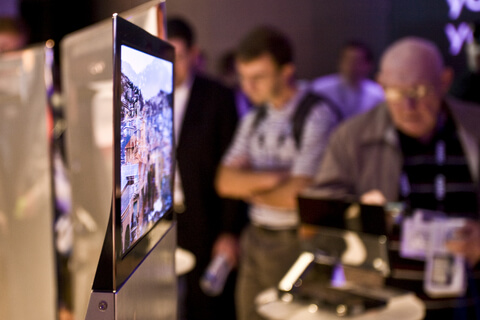
Three-person babies
A new method of IVF which involves the creation of babies with three parents has been introduced in the UK.* The controversial technique uses DNA from parents and combines it with healthy mitochondria from a female donor. This can prevent a rare, potentially fatal disease occurring that would normally cause a severe lack of energy, muscle weakness and in some cases heart failure. Although the baby has genetic material from three people, regulations state that for legal purposes it has two and the donor remains anonymous. A number of ethical concerns are raised by this landmark in IVF, but the treatment is shown to be safe. More advanced techniques will emerge in the decades ahead, leading to “designer babies” for the wealthy.*

New drug delivery methods for brain-related conditions
The main issue preventing effective treatments of many brain disorders had for years been the blood-brain barrier. This helps to protect the brain from dangerous bacteria, but it also blocks drugs from entering, prohibiting effective medical treatments. In 2011, however, a major breakthrough was made through controlled tests on mice. It was found that the body’s own exosomes – tiny vesicles just 30-90 nanometres across, which are naturally used to carry material between cells – could be fused with genetic material and sent directly into the brain. A piece of genetic code, siRNA, was made to bypass the blood-brain barrier. Inside, the genetically modified exosomes succeeded in shutting off a gene, BACE1, which is involved in Alzheimer’s disease.
This development opened the door to numerous advances in the treatment of brain-related conditions. It was also determined that the method could be used in other parts of the body, such as muscles, and could be specialised for an individual patient. Clinical trials begin this year, in which the method proves effective in humans. In the 2020s, radical new treatments for Alzheimer’s, Parkinson’s, brain tumours and other serious neurological conditions begin to appear on the market.*

A pill to prevent sunburn
In 2011, British researchers who analysed coral samples from the Great Barrier Reef made a remarkable discovery. Algae living within the coral were found to produce a special compound that was transported to the coral, then modified to protect both the algae and the coral from the sun’s ultraviolet (UV) rays. Not only that, but fish feeding on the coral were also found to benefit, so it was clearly passed up the food chain.
After establishing how this compound was created and passed on, it was biosynthetically developed in a laboratory, creating a sunscreen for human use. Following tests conducted on skin samples, this is now available in tablet form and provides sun protection for the whole body.
Further research on this compound is underway, as it has the potential to create sun-tolerant plants that could boost world food supplies. Genetically engineering food crops to use the coral’s biochemical pathways could make it possible to grow temperate crops, such as wheat and potatoes, at high yields in the tropics.*

Completion of the i5K project
i5K is a five year project to sequence the genomes of 5,000 insect and related arthropod species.* It aims to identify the vulnerable regions of insect DNA, which could then be targeted with pesticides and other treatments. This could reduce the $50 billion spent globally each year to control the many diseases transmitted by insects.
It could also aid the search for suitable compounds for use as pesticides: ones that kill a targeted pest, but leave the beneficial pollinating insects unharmed. This may help in reversing colony collapse disorder, for example, which has ravaged bee populations for decades. On current trends, honeybees had been expected to go extinct by 2035 – potentially resulting in global famine.* The project could also be useful in combatting malaria, one of the world’s most common infectious diseases and responsible for 2.2% of all deaths globally.
The costs of genome sequencing have fallen exponentially in recent years – making it feasible to cheaply sequence huge numbers of animals and plants.**

China completes the largest environmental cleanup in its history
The rapid growth of China in recent decades led to some truly appalling environmental conditions in the country, particularly the developing urban areas. Since 2006, China had been the world’s largest producer of CO2, a result of coal power supplying 70% of the country’s energy. Smog became a major problem in cities, with lung disease affecting many millions of their inhabitants. By 2011, 16 of the world’s 20 most polluted cities were located in China, with Linfen, Shanxi Province the most polluted overall.* Numerous rivers and aquifers were endangered.*
To rectify these conditions, the Chinese government in 2011 began an ambitious Five Year Plan to stem the flow of pollutants and clean up the damage done.* A tax was applied to heavy polluters, based on the output of hazardous chemicals and sewage. The goal was to fix the situation caused by the previously unregulated industrial growth, which had first attracted the polluters to the country. The resultant revenue primarily went towards restoring damaged environments. Many non-profit groups aided in the cleanup during this time. New regulations were also introduced, putting a cap on energy use. Targets were set to lower carbon emissions significantly. This went along with China’s long term goal of green energy dominance.
Though some progress has been made over this five year period, the entrenchment of dirty industry and the explosive growth of the country makes it very difficult to turn the environmental situation around. It will take decades of further work before China has transitioned to a truly green economy.

Polymer banknotes are introduced by the Bank of England
Until now, all banknotes in the UK were made from cotton fibre and linen rag. This made them susceptible to dirt and damage – five pound notes in particular, which lasted on average for just one year. In 2016, a new range of smaller, plastic banknotes enters circulation.* These are produced from a thin, transparent and flexible film made of polypropylene which offers a number of advantages:
• They are resistant to dirt and moisture, so stay cleaner for longer than paper banknotes.
• They are more secure than paper banknotes. They can incorporate advanced security features, making them more difficult to counterfeit. This includes a portion of the film left clear to form a “window” in the design.
• They are more durable. They last at least 2.5 times longer than traditional paper banknotes, so will take longer to become “tatty”, improving the quality of banknotes in circulation. They can even survive being put into a washing machine by accident, for example.
In addition, they are more environmentally friendly and, because they last longer are, over time, cheaper than paper banknotes. Being thin and flexible, they fit into wallets and purses as easily as paper banknotes.
Modern polymer banknotes were first issued as currency by Australia in 1988 (coinciding with that country’s Bicentenary year). By the early 2010s, around 20 other countries were using them.
US presidential election
The 58th US presidential election is held on Tuesday 8th November 2016. The incumbent president Obama is ineligible to be elected to a third term, due to term limits in the 22nd Amendment to the US Constitution.

The Gotthard Base Tunnel is completed
After 20 years of construction, the first trains are now running through Switzerland’s Gotthard Base Tunnel.* With a route length of 57 km (35 mi) and a total of 152 km (94 mi) of tunnels, shafts and passages, it becomes the world’s longest rail tunnel (though it will soon be surpassed by an even longer rail tunnel in China).
Running directly through the Alps mountain range, at depths of up to 2500m, it cuts the 3.5-hour travel time from Zürich to Milan by an hour, while the journey from Zürich to Lugano is reduced to one hour 40 minutes. Passenger trains operate as fast as 250 km/h (155 mph) through the new tunnels.
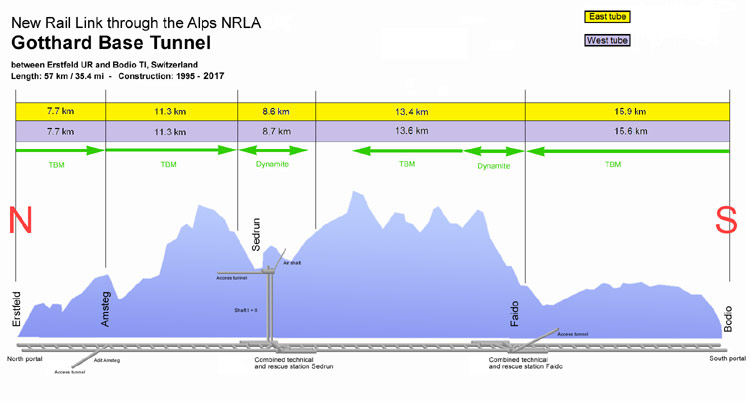
Launch of the Titanic II
More than 100 years after the ill-fated voyage of RMS Titanic, an exact replica is built and launched by the Australian billionaire Clive Palmer. The boat sails from China – where it is constructed – to Southampton in England ahead of her maiden passenger journey to New York. Guests include leading U.S. business figures, who are treated to a dinner from the same menu as Titanic passengers on the day it sank.*

References
۱ “The underwater tunnel is expected to be completed within the period of the 13th five-year plan [2016 to 2020].”
See Dalian to Yantai underwater tunnel to be world’s longest, The Standard:
http://www.thestandard.com.hk/breaking_news_detail.asp?id=46256&icid=a&d_str=
Accessed 15th February 2014.
۲ “In 1976, a 7.5 magnitude earthquake in the nearby city of Tangshan killed hundreds of thousands.”
See China plans the world’s longest undersea tunnel, The Telegraph:
http://www.telegraph.co.uk/news/worldnews/asia/china/10638881/China-plans-the-worlds-longest-undersea-tunnel.html
Accessed 15th February 2014.
۳ Panama Canal expansion project, Wikipedia:
https://en.wikipedia.org/wiki/Panama_Canal_expansion_project
Accessed 8th November 2014.
۴ Dogs in England must be microchipped from 2016, BBC:
http://www.bbc.co.uk/news/uk-21345730
Accessed 6th February 2013.
۵ See ۲۰۴۰.
۶ SpaceX lifts the lid on the Dragon V2 crew spacecraft, NASASpaceFlight:
http://www.nasaspaceflight.com/2014/05/spacex-lifts-the-lid-dragon-v2-crew-spacecraft/
Accessed 31st May 2014.
۷ India announces first manned space mission, BBC:
http://news.bbc.co.uk/1/hi/world/south_asia/8483787.stm
Accessed 29th August 2011.
۸ India’s Chandrayaan-2 Moon Mission Likely Delayed After Russian Probe Failure, Asian Scientist:
http://www.asianscientist.com/topnews/india-chandrayaan-2-moon-mission-delayed-after-russian-probe-failure-lev-zelyony-2012/
Accessed 15th April 2012.
۹ World’s First Mission to the Moon’s South Pole Announced by Moon Express, Inc. and the International Lunar Observatory Association, Moon Express:
http://www.moonexpress.com/blog.php?id=95
Accessed 20th July 2013.
۱۰ Russia to Build a Hotel in Outer Space, Launch Set for 2016, Discovery News:
http://news.discovery.com/adventure/travel/russia-to-build-a-hotel-in-outer-space-launch-set-for-2016.htm
Accessed 20th July 2013.
۱۱ ۵ Star Space Hotel? Book a cosmic tour now!, Russia Today:
https://www.youtube.com/watch?v=l9I1l_eDxJU
Accessed 20th July 2013.
۱۲ World View Enterprises, Vicespy:
http://www.vicespy.com/world-view-enterprises/
Accessed 26th October 2013.
۱۳ New NASA Mission to Take First Look Deep Inside Mars, NASA:
http://www.jpl.nasa.gov/news/news.cfm?release=2012-250
Accessed 23rd August 2012.
۱۴ Juno – Unlocking Jupiter’s Mysteries, NASA:
http://www.nasa.gov/mission_pages/juno/main/index.html
Accessed 2nd September 2011.
۱۵ Five hundred meter Aperture Spherical Telescope, Wikipedia:
https://en.wikipedia.org/wiki/Five_hundred_meter_Aperture_Spherical_Telescope
Accessed 13th December 2014.
۱۶ China building world’s biggest radio telescope, gizmag:
http://www.gizmag.com/five-hundred-meter-aperture-spherical-radio-telescope/18930/
Accessed 13th December 2014.
۱۷ Mine of the Future – Rio Tinto’s Innovation Pathway, Mine Expo:
http://www.minexpo.com/component/docman/doc_view/157-mine-of-the-future-program-rio-tintos-innovation-pathway.html
Accessed 27th July 2013.
۱۸ Automation drives workers out of mining jobs, The North West Star:
http://www.northweststar.com.au/story/1665671/automation-drives-workers-out-of-mining-jobs/
Accessed 27th July 2013.
۱۹ Codelco to complete automation of mining IT systems by 2016, BN Americas:
http://www.bnamericas.com/news/technology/codelco-to-complete-automation-of-mining-it-systems-by-2016
Accessed 27th July 2013.
۲۰ More automation could mean fewer jobs in mining communities, The University of Queensland:
http://www.uq.edu.au/news/index.html?article=26499
Accessed 27th July 2013.
۲۱ “A technical study was carried out by the UN’s International Seabed Authority – the body overseeing deep sea mining. It says companies could apply for licences from as soon as 2016.”
See Deep sea mining ‘gold rush’ moves closer, BBC:
http://www.bbc.co.uk/news/science-environment-22546875
Accessed 27th July 2013.
۲۲ Mining the Seafloor with Robots, Robotics Business Review:
http://www.roboticsbusinessreview.com/research/report/mining_the_seafloor_with_robots
Accessed 27th July 2013.
۲۳ Asteroid mining company reveals plans, Future Timeline Blog:
http://www.futuretimeline.net/blog/2013/01/23.htm
Accessed 27th July 2013.
۲۴ “The technology is ready, and now we can start seeing this penetrating into the market,” said Yael Edan, an engineer and robotics researcher at Ben-Gurion University of the Negev in Israel. “I would say there will definitely be robots out there in five years.”
See Robots on the Farm, Discovery News:
http://news.discovery.com/tech/robots-farming-agriculture-110412.html
Accessed 4th September 2011.
۲۵ Orange Harvesting, Vision Robotics Corporation:
http://visionrobotics.com/vrc/index.php?option=com_zoom&Itemid=1&catid=4
Accessed 4th September 2011.
۲۶ See ۲۰۲۵.
۲۷ Hi-def CCTV technology threatens our democracy – we must act now, The Guardian:
http://www.guardian.co.uk/commentisfree/2012/oct/03/high-definition-cctv-threatens-democracy
Accessed 3rd October 2012.
۲۸ High-def CCTV cameras risk backlash, warns UK watchdog, BBC:
http://www.bbc.co.uk/news/technology-19812385
Accessed 3rd October 2012.
۲۹ “…I have been researching this very closely for several years and have some contacts working for the likes of Samsung in Asia who develop this. I can assure you that the cost hurdles are mainly related to research costs and the costs of developing efficient factories and processes. Billions upon billions of dollars are currently being invested by LG and Samsung so that they can ramp up production efficiency. The actual technology should be ready for primetime over the next few years – starting with some premium ~30″ TVs later this year. Commercial viability, if everything stays on track, should be expected by 2015-16. Thus LCD technology will likely be phased out over the coming decade, as I said.” — PCM2
http://forums.overclockers.co.uk/showthread.php?p=18211773#post18211773
Accessed 5th June 2011.
۳۰ “LG is prepared to ramp up quickly to take the lead in the OLED segment that is expected to reach 7.2 million units in 2016, by which time it should be much more affordable.”
See LG launches the first next-generation OLED 55″ TV, Future Timeline Blog:
http://www.futuretimeline.net/blog/2013/01/3.htm
Accessed 3rd January 2013.
۳۱ Why make babies from three people?, BBC:
http://www.bbc.co.uk/news/health-27682884
Accessed 19th August 2014.
۳۲ See ۲۰۵۳.
۳۳ “The team expect to begin trials in human patients within five years.”
See Breakthrough in delivering drugs to the brain, BBC:
http://www.bbc.co.uk/news/health-12776222
Accessed 4th September 2011.
۳۴ “There would have to be a lot of toxicology tests done first, but I imagine a sunscreen tablet might be developed in five years or so. Nothing like it exists at the moment.”
See Sunscreen pill could be available within five years, scientists say, The Guardian:
http://www.guardian.co.uk/environment/2011/aug/31/sunscreen-pill-coral-five-years
Accessed 31st August 2011.
۳۵ i5K Insect and other Arthropod Genome Sequencing Initiative:
http://arthropodgenomes.org/wiki/i5K
Accessed 18th June 2011.
۳۶ Extract from A World Without Bees, BBC:
http://www.bbc.co.uk/blogs/newsnight/fromthewebteam/2008/08/extract_from_a_world_without_b.html
Accessed 18th June 2011.
۳۷ DNA Sequencing Costs, National Human Genome Research Institute:
http://www.genome.gov/sequencingcosts/
Accessed 18th June 2011.
۳۸ See ۲۰۱۵-۲۰۱۹.
۳۹ The World’s Most Polluted Places, TIME:
http://www.time.com/time/specials/2007/article/0,28804,1661031_1661028_1661016,00.html
Accessed 4th September 2011.
۴۰ Amazing Pictures, Pollution in China, China Hush:
http://www.chinahush.com/2009/10/21/amazing-pictures-pollution-in-china/
Accessed 4th September 2011.
۴۱ China to impose green tax on heavy polluters, The Guardian:
http://www.guardian.co.uk/world/2011/feb/04/china-green-tax-polluters?CMP=twt_gu
Accessed 4th September 2011.
۴۲ Plastic banknotes ready for 2016, says Bank of England, BBC:
http://www.bbc.co.uk/news/business-24029785
Accessed 10th September 2013.
۴۳ Gotthard Base Tunnel, Wikipedia:
https://en.wikipedia.org/wiki/Gotthard_Base_Tunnel
Accessed 10th September 2013.
۴۴ Design for Titanic II to be unveiled, Mother Nature Network:
http://www.mnn.com/lifestyle/arts-culture/stories/design-for-titanic-ii-to-be-unveiled
Accessed 4th October 2012.
